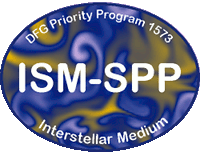DFG Priority Program 1573
ISM-SPP Students
| ISM-SPP Student representatives | |
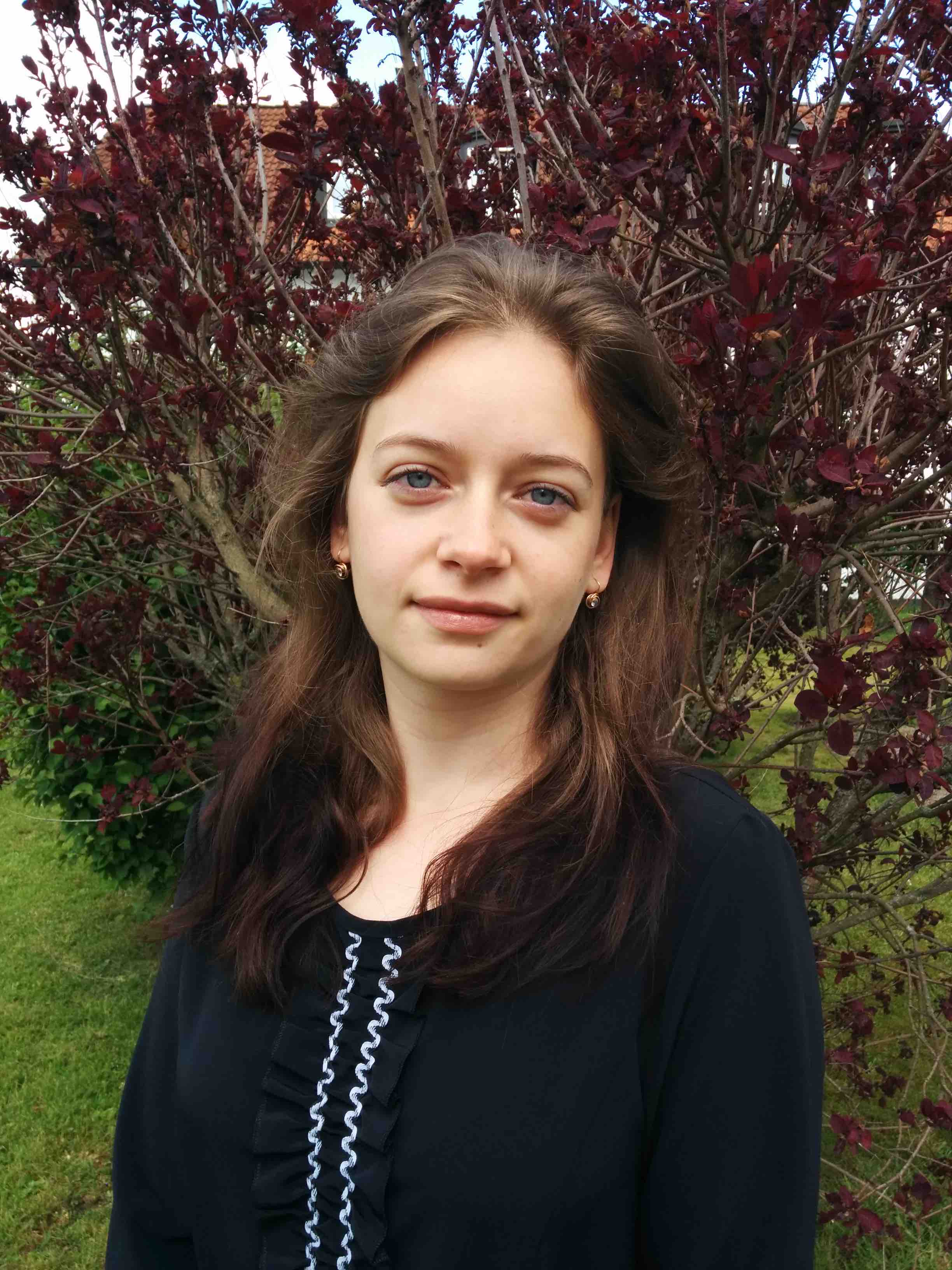 |
Anabele-Linda PardiSupervisor:Affiliation: Max Planck Institute for Astrophysics Address: Karl-Schwarzschild-Str. 1 D-85741 Garching Tel. number: +4989 300003569 E-mail: pardia @ mpa-garching.mpg.de I study the magnetic impact of magnetic fields on the chemical evolution of the ISM with numerical simulations developed by the SILCC (Simulating the Life-Cycle of molecular Clouds) collaboration: S. Walch-Gassner, D. Derigs (Koln), P. Girichidis, T.Naab, A. Gatto, T. Peters (Garching), S.C.O. Glover, R.S. Klessen (Heidelberg), R. Wunsch (Prague) and P.C. Clark (Cardiff). We use three-dimensional MHD simulations including a chemical network and shielding from an interstellar radiation field, to explore how magnetic fields alter the formation of molecular gas in the ISM. Publications: "Sausage mode frequency windows at the interface of the sun's atmospheric layers", 2012, Pardi, Anabele-Linda; Marcu, Alexandru; AIPC, 1472 "The effect of cooling on sausage and kink oscillation modes in expanding coronal loops", 2013, Pardi, A.; Magyar, N.; Mocanu, G. R.; Marcu, A., AIPC, 1564 "Appearance of an accretion disk perturbed by fractional Brownian Motion density" 2014, Mocanu, Gabriela; Magyar, Norbert; Pardi, Anabele; Marcu, Alexandru; NMRAS, 439 "Sausage Mode Propagation in a Thick Magnetic Flux Tube", 2014, Pardi, A.; Ballai, I.; Marcu, A.; Orza, B., SoPh, 289 "The impact of magnetic fields on the chemical evolution of the supernova-driven ISM", 2016, A. Pardi, P. Girichidis, T. Naab, S. Walch, T. Peters, F. Heitsch, S.C.O. Glover,, R.S. Klessen, R. Wunsch, A. Gatto (submitted) |
| ISM-SPP Students | |
 |
Arno BeckerSupervisor:Affiliation: Address: Saupfercheckweg 1, D-69117 Heidelberg Tel. number: +496221516504 E-mail: Arno.Becker@mpi-hd.mpg.de Dissociative recombination (DR) of molecular ions is an important process in the gas phase chemistry of the interstellar medium. This process has been successfully studied for a wide range of systems in storage ring merged-beam experiments using, e.g., the Test Storage Ring (TSR) in Heidelberg. For next generation DR measurements on molecular ions in or near the rovibrational ground state the new Cryogenic Storage Ring (CSR), currently under construction at the Max Planck Institute for Nuclear Physics in Heidelberg, will be cooled down to ~10 K. With the merged velocity matched electron beam at this device the electron collision energies will also reach down to ~10 K. I am developing a 3D imaging system to study the neutral fragments from each DR event in the electron cooler of CSR. The detector will be operated in an extremely high vacuum of ~10-13 mbar at temperatures of ~10 K. A bake-out temperature of ~520K put even higher demands on the design. The dead time and timing resolution have to be in the ns range in order to temporally distinguish between impinging particles from each dissociation event. In addition I am involved in the analysis of DR data obtained at the former Test Storage Ring in Heidelberg. Analysis is in progress for SH+, which has been observed in the ISM with abundances up to several orders of magnitudes higher than those predicted by existing astrochemical models. The DR is a key destruction channel for SH+ and its rate coefficient is essential for improving those astrochemical models. |
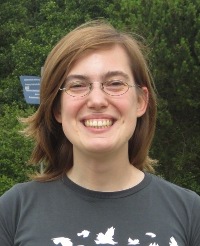 |
Gesa BertrangSupervisor:Affiliation: Address: Leibnizstraße 15, D-24118 Kiel Tel. number: +494318804106 E-mail: gbertrang@astrophysik.uni-kiel.de The influence of magnetic fields on the star-forming process is still an open question, although a very important one. The best environment to study this influence is given in low-mass star-forming regions, called Bok globules. These objects are less effected by other effects like large-scale turbulences. The magnetic field strength and structure in the dense inner of the globules can be determined by observing the polarized re-emission of aligned dust grains in the sub-mm. The magnetic field in the outer, less dense parts of the globules can be traced by observing polarized radiation of background stars in the optical or near-IR. Thus, multi-wavelength observations reveal the magnetic field strength and structure across the entire globule. To study the magnetic field in low-mass star formation I make use of both, numerical simulations and observations of aligned dust grains. The numerical simulations are based on a 3D radiative transfer code where the 3D density distribution, dust properties and the 3D magnetic field structure are free parameters and can therefore be fitted to or constrained by observations. The polarimetric observations are carried out in the sub-mm, near-IR and the optical to trace the globules magnetic field on large scales. Combined with the modeling they provide new insights into the role of magnetic fields in the star-forming process. |
 |
Anahi Caldu-PrimoSupervisor:Affiliation: Address: Königstuhl 17, D-69117 Heidelberg Tel. number: +496221528349 E-mail: caldu@mpia.de We are studying the velocity dispersions in nearby galaxies of both molecular and atomic gas phases. We are interested in exploring the energy input sources for non-thermal motions in the interstellar medium. |
 |
Andrea GattoSupervisor:Affiliation: Address: Karl-Schwarzschild-Straße 1, D-85748 Garching Tel. number: +4989300002262 E-mail: agatto@mpa-garching.mpg.de My work is focused on how stellar feedback (winds and Supernovae) affects the physical conditions under which star formation occurs. To study this particular scenario I am using massively parallel, three-dimensional simulations on supercomputers with a hydrodynamical, Adaptive Mesh Refinement code (FLASH). |
 |
Bastian GundlachSupervisor:Affiliation: Address: Mendelssohnstraßse 3, D-38106 Braunschweig Tel. number: +495313915231 E-mail: b.gundlach@tu-braunschweig.de We perform low-velocity impact experiments of (sub)μm-sized water ice, ice-coated silica, and pure silica particles with ice, silica, and ice/dust targets in a wide range of temperatures and under high-vacuum conditions. These experiments are intended to simulate inter-particle collisions in the densest and coldest interstellar clouds, for which grain growth by coagulation has been postulated and observed. Above all, we are interested in the sticking threshold for water-ice particles as a function of grain size, which is widely used in the literature but for which empirical data are lacking. On top of that, we also intend to measure the charge transfer in these collisions to assess whether triboelectric charging is a possible source for free charge carriers in dense interstellar clouds in which the classical sources of ionization, i.e. ultraviolet radiation and cosmic rays, are not effective. Our study will be complemented by infrared measurements of loose particle ensembles with which we will gain insight into the optical properties of coagulated spherical ice and ice-coated dust particles. A deeper understanding of the combined processes of coagulation, fragmentation, triboelectric charging, and optical properties of small particle agglomerates is required to calibrate models of the dust-mass evolution, the chemical evolution, and the radiative energy transport in molecular clouds. Publications: 1. Gundlach, B., Skorov, Y. V., Blum, J.: Outgassing of icy bodies in the Solar System - I. The sublimation of hexagonal water ice through dust layers; Icarus 213, 710-719. 2. Gundlach, B., Kilias, S., Beitz, E., Blum, J.: Micrometer-sized ice particles for planetary-science experiments - I. Preparation, critical rolling friction force, and specific surface energy; Icarus 214, 717-723. 3. Gundlach, B., Blum, J.: Outgassing of icy bodies in the solar system - II. Heat transport in dry, porous surface dust layers; Icarus 219, 618-629.. |
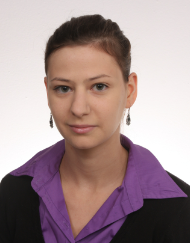 |
Maria KapalaSupervisor:Affiliation: Address: Königstuhl 17, D-69117 Heidelberg Tel. number: +496221528465 E-mail: kapala@mpia.de Our goal is to understand the energy balance of the ISM. To do this we need to assess heating and cooling of gas and dust data: Herschel (photometry and spectroscopy), HST (Pan-chromatic Hubble Andromeda Treausury survey), Calar Alto (PPAK) - optical spectroscopy and others. We will carry out detailed study of a "typical" large galaxy M31. For the first time, we can map all heating and cooling processes at a resolutions of ~ 45 pc. We will analyze Herschel observations of gas cooling, along with an existing set of multiwavelength observations of the young stars (PHAT), dust and gas. CII and OI lines can potentially be used to estimate the current star-formation rate and to diagnose physical conditions in the ISM. We hope they will become routine tools for studying the ISM and galaxy evolution at a variety of redshifts with ALMA. Thanks to resolved measurements and understanding the energy balance in ISM, we may be able to convert spatially unresolved measurements of cooling lines into physical quantities like star-formation rates, densities and temperatures. Publications: 1. Kapala, M.; Bulik, T.; Rudak, B.; Dubus, G.; Lyczek, M.: A Two-Component Model of the HE Radiation from LS 5039 as observed by Fermi/LAT 2. Sandstrom, K.; Groves, B.; Kapala, M.; Dalcanton, J.; Gordon, K.; Krause, O.; Leroy, A.; Rix, H.; Schinnerer, E.; Schruba, A.: The Energy Budget of Massive Star-Formation in Andromeda 3. Groves, B.; Krause, O.; Sandstrom, K.; Schmiedeke, A.; Leroy, A.; Linz, H.; Kapala, M.; Rix, H.; Schinnerer, E.; Tabatabaei, F.: The heating of dust by old stellar populations in the bulge of M31 |
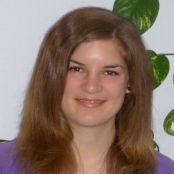 |
Denise KellerSupervisor:Affiliation: Address: Auf den Hügel 69, D-53121 Bonn Tel. number: +49228525425 E-mail: dkeller@mpifr-bonn.mpg.de, dkeller@astro.uni-bonn.de Chemical modelling of circumstellar envelopes of evolved stars |
 |
Bastian KörtgenSupervisor:Affiliation: Address: Gojenbergsberg 112, D-21029 Hamburg Tel. number: +4940428388463 E-mail: bkoertgen@hs.uni-hamburg.de Website: http://www.hs.uni-hamburg.de/DE/Ins/Per/Koertgen/index.html The role of stellar feedback for the evolution and dynamics of molecular clouds |
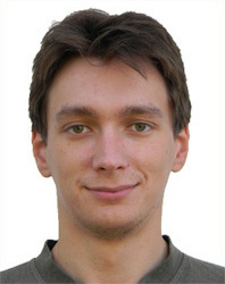 |
Mykola MalyginSupervisor:Affiliation: Address: Königstuhl 17, D-69117 Heidelberg Tel. number: +4915734889021 E-mail: malygin@mpia.de I perform numerical simulations for massive star formation using PLUTO (MHD code by A.Mignone et al.) and Makemake (Radiation Tracing routine by R.Kuiper); also aware of computing gaseous opacities. Publications: 1. Malygin M. G., Pavlenko Ya. V., Jenkins J. S. et al.: Determination of atomic abundances of solar-type stars; Advances in Astronomy and Space Physics, Vol. 2, p.20-22 2. Malygin, M.; Iakubovskyi, D.: Search for cyclotron absorptions from magnetars in the quiescence with XMM-Newton; Contributed Papers of 17th Young Scientists' Conference on Astronomy and Space Physics, Kyiv 2010, pp. 43-46 |
 |
Michal MichnoSupervisor:Affiliation: Address: Universitätsstraße 150, D-44780 Bochum Tel. number: +492343222051 E-mail: mjm@tp4.rub.de My current research interests focus on the temperature anisotropy of the solar wind plasma. The anisotropization of the solar wind has been attributed to the CGL mechanism, and the resulting temperature anisotropy is counterbalanced by anisotropy driven instabilities, so that the resulting distribution function is nearly isotropic. I am modelling various of these instability types, especially the linear phase of collisionless kinetic instabilities. The most recent project is an analytical and numerical investigation of the firehose instability threshold condition, which is operating in the high plasma beta and low anisotropy regime. |
 |
Ramon Rey-RaposoSupervisor:Affiliation: Address: Stocker Road, EX4 4QL Exeter, United Kingdom Tel. number: +441392725518 E-mail: rrr@astro.ex.ac.uk Website: http://emps.exeter.ac.uk/physics-astronomy/staff/rmr208 Molecular Clouds are the birthplace of stars and planetary systems. Therefore the study of the creation and evolution of molecular clouds is crucial to understand the star formation process. During the last years, the clouds have been thoroughly studied in terms of their emission, structure and kinematics, but aspects of their formation and evolution are still unclear. For example, which is the precise process that generates molecular hydrogen from atomic clouds? At which pace does the star formation happens? Once the molecular cloud is formed, is this process instantaneous, or does it take a few dynamical times to happen? What are the main effects that directly lead to the creation of a cloud? And what physical phenomena will cause their diffusion? During the last 30 years, many simulations have been done, to model galaxies and molecular clouds. However, the extensive dynamical range, from the tenths of kiloparsecs in a galaxy to the parsec size of star forming regions, makes it difficult to perform full scale simulations. Standard galactic models have been done up to a great precission, but not enough to resolve individual star forming clouds. I plan to simulate molecular clouds in detail, using the SPH code GADGET, to try to get a better understanding of the birth, evolution and destruction of the molecular clouds. |
 |
Stefan_ReißlSupervisor:Affiliation: Address: Leibnizstraße 15, D-24118 Kiel Tel. number: +494318804106 E-mail: sreissl@astrophysik.uni-kiel.de Website: http://www.astrophysik.uni-kiel.de/~star/index.php?seite=mit_sreissl Magnetic fields are very crucial to many astrophysical phenomena inside the ISM, such as collapsing giant molecular clouds, accretion of matter, and subsequently star and planet formation. In addition, dust particles also play a central role in the ISM from thermodynamics to the chemistry of the gas. The primary goal is to reveal the contribution of magnetic fields in those phenomena by evaluating the potential and accuracy of continuum polarization measurements. The general approach is to post-process magnetic fields, temperature and density distributions resulting from MHD simulations to create synthetic polarization maps containing non-spherical aligned dust grains with the help of 3D Monte-Carlo radiation transport codes. We use scattering and dichroic polarization mechanisms of stellar light and background radiation to study both, the effects of magnetic forces on the ISM and the grain properties itself. Interstellar dust grains can be a composite collection of materials of distinct distributions and complex shapes. However, the computation of the optical properties of such dust grains as well as its alignment along the magnetic field lines are still a matter of debate. We analyse the optical parameter using approximate models of the grains. Different kinds of dust grain properties and advanced multi scale MHD scenarios are considered to offer maps for a broad variety of ISM configurations. Finally, careful comparisons of synthetic polarisation maps and observational data will provide a more sophisticated insight in grain alignment mechanisms and reveal the magnetic field structure and topology on multiple wavelengths inside the ISM. |
 |
Jennifer SchoberSupervisor:Affiliation: Address: Albert-Ueberle-Strasse 2, D-69120 Heidelberg Tel. number: +49 6221 54 8974 E-mail: schober@stud.uni-heidelberg.de With an energy density comparable to the one of the thermal kinetic gas and cosmic rays, magnetic fields are very important for the dynamics of the ISM at present day. The origin of cosmic magnetic fields is, however, still an unsolved problem. In my PHD thesis I investigate the role of the turbulent dynamo, also known as the small-scale dynamo, in the evolution of magnetic fields. This mechanism converts turbulent kinetic energy into magnetic energy by randomly stretching and twisting the magnetic field lines. The turbulent dynamo is most efficient on the smallest scale of the turbulent inertial range, but magnetic energy can also be shifted towards larger scales. We extend an analytical theory for the small-scale dynamo by taking into account the effects of different types of turbulence, from incompressible to highly compressible turbulence. With semi-analytical models of the primordial ISM, we analyse the role of the turbulent dynamo in the formation of the first stars and galaxies. We find that strong unordered magnetic fields can be produced on short timescales compared to the dynamical timescales of the systems. We thus conclude that the turbulent dynamo plays a crucial role in producing the strong magnetic fields that are observed in the local Universe. Publications: 1. Schober, J.; Schleicher, D. R. G.; Klessen, R. S.: Magnetic field amplification in young galaxies; Astronomy & Astrophysics 2013 2. Schleicher, D.; Schober, J.; Federrath, C.; Bovino, S.; Schmidt, W.: The small-scale dynamo: Breaking universality at high Mach numbers; New Journal of Physics 2013 3. Bovino, S.; Schleicher, D.; Schober, J.: Turbulent magnetic field amplification from the smallest to the largest magnetic Prandtl numbers: Implications of the turbulent spectra; New Journal of Physics 2013 4. Schober, J.; Schleicher, D.; Bovino, S.; Klessen, R.: The Small-Scale Dynamo at Low Magnetic Prandtl Numbers; Physical Reviews E 2012 5. Schober, J.; Schleicher, D.; Federrath, C.; Glover, S.; Klessen, R.; Banerjee, R.: The Small-scale Dynamo and Non-ideal Magnetohydrodynamics in Primordial Star Formation; Astrophysical Journal 2012 6. Schober, J.; Schleicher, D.; Federrath, C.; Klessen, R.; Banerjee, R.: Magnetic field amplification by small-scale dynamo action: Dependence on turbulence models and Reynolds and Prandtl numbers; Physical Reviews E 2012 7. Federrath, C.; Chabrier, G.; Schober, J.; Banerjee, R.; Klessen, R. S.; Schleicher, D.: Mach Number Dependence of Turbulent Magnetic Field Amplification: Solenoidal versus Compressive Flows; Physical Reviews Letters 2011 |
 |
Kaija SpruckSupervisor:Affiliation: Address: Saupfercheckweg 1, D-69117 Heidelberg Tel. number: +4962215165041 E-mail: kaija.spruck@mpi-hd.mpg.de In the interstellar medium driving mechanism involving charged particles take place at temperatures and desities much below standard laboratory conditions. The electrostatic Cryogenic Storage Ring at the MPIK in Heidelberg is an unique tool for reaction studies as it will provide a low temperature environment (~10 K) in extremly high vacuum conditions (better 10-13 mbar RTE). An electron-cooler is foreseen to allow for electron-cooling and collision-experiments on highly charged ions. During the expected storage times of up to 1000s excited ions can decay to their ground state. Monoenergetic electron-ion-collision studies on ion species of well-defined states will be possible. Absolute cross sections obtained by these experiments will give insight into the chemical network of interstellar binary reactions involving heavy elements such as N+, F+ or Si+. I am developing a moveable detector for electron-ion-collision studies at the CSR. The high-bakeout temperatures of ~550K and the low operating temperature of 10K in addition to the XHV place strong demands on the materials and design. In addition all components have to be made of non-magnetic materials. The detector has to be tested carefully before its integration into the CSR. First experiments at the storage ring are planned for 2014. |
 |
Gabriele WarthSupervisor:Affiliation: Address: Sand 1, D-72076 Tübingen E-mail: warth@astro.uni-tuebingen.de I am working on the Hot Interstellar Medium of the Supergiant Shell LMC-SGS 2 in the Large Magellanic Cloud. This shell has been heated up by generations of supernovae and has a temperature of about 1 Mio. Kelvin. We're studying the diffuse X-ray emission that is emitted by this shell to understand better its origion, properties and the distribution of the gas. For this, we're using data of the X-ray satellite XMM-Newton. Publications: 1. Tenzer, C.; Warth, G.; Kendziorra, E.; Santangelo, A.: Geant4 simulation studies of the eROSITA detector background (Conference Proceedings), SPIE 2010. 2. Maier, D.; Dick, J.; Distratis, G.; Kendizorra, E.; Santangelo, A.; Schanz, T.; Tenzer, C.; Warth, G.: Development of fast data processing electronics for a stacked x-ray detector system with application as a polarimeter(Conference Proceedings), SPIE 2012. |
 |
Martin WeidlSupervisor:Affiliation: Address: Boltzmannstraße 2, D-85748 Garching Tel. number: +498932991949 E-mail: martin.weidl@ipp.mpg.de We investigate the transport of fast particles in cosmic magnetic fields, applying scaling concepts recently proposed in the context of tokamak physics. Eventually we intend to develop an improved weak-turbulence transport theory of fast charged particles in a turbulent magnetic field which avoids the common quasilinear approximation of particle orbits and takes recent nonlinear improvements into account. |
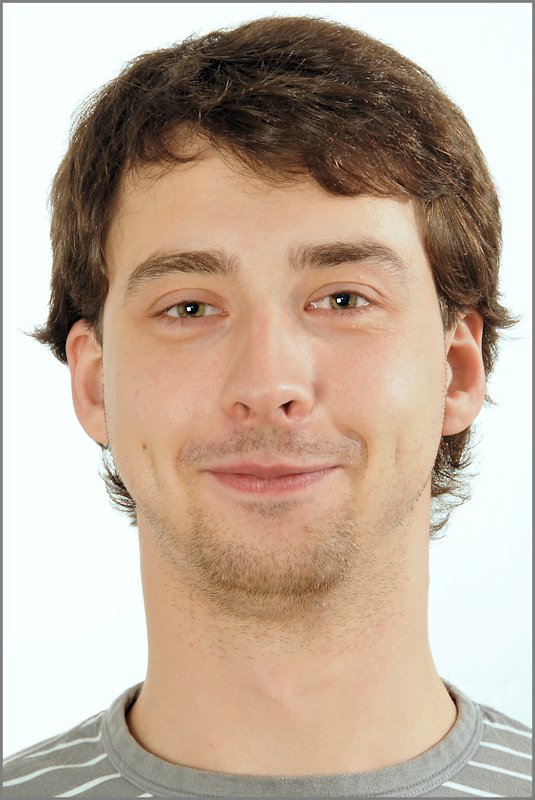 |
Volker WeissSupervisor:Affiliation: Address: Sternwarte 5, D-07778 Tautenburg Tel. number: +493642786369 E-mail: volker@tls-tautenburg.de The impact of protostellar outflows on the ISM: Turbulent support of molecular clouds might be one solution to the problem why the observed star formation rate is much lower than expected if molecular clouds would collapse on their free-fall time scale. The prerequisite, however, is that the turbulent energy which is being dissipated in shocks can be replenished. Protostars eject a certain fraction of the descending matter by bipolar jets and outflows at high speed. Thus, they are considered as potential drivers for stirring the turbulence. However, there are controversial views in the literature whether or not jets and outflows can provide sufficient input to actually stabilize clouds. In order to help clarifying the role of outflows in this context we propose a thorough study of the impact of protostellar outflows on the ISM. In order to assess physical parameters of outflows such as energy and momentum we will combine near- infrared and radio data of welI-investigated regions, use excitation models to account for missing transitions, and keep the time-variability of the flows as well as their geometry in mind. We will apply the derived results for outflows identified in H2 surveys (GLIMPSE follow-up, UWISH2) to improve the overall statistics. Moreover, we propose to specify and procure H2 filters for VISTA to perform a southern wide-field Galactic plane survey which will supplement ongoing/future ISM studies with Herschel, and ground-based facilities, e.g. ALMA. |
| Former Students | |
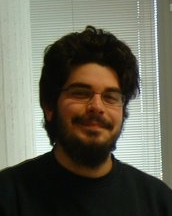 |
Alessandro BalloneSupervisor:Affiliation: Max Planck Institute for Extraterrestrial Physics Address: Giessenbachstraße, D-85748 Garching Tel. number: +4989300003884 E-mail: aballone@mpe.mpg.de We are studying stellar winds for a large range of ambient densities and pressures with the help of the hydro-code PLUTO (Mignone et al., 2007). Understanding the evolution and interaction of winds, particularly for high pressure external media, will help us in finding a plausible origin for the G2 cloud observed in the Galactic center, as well as in explaining the clumpy and turbulent structure of AGN tori. Publications: 1. Ballone, A., Schartmann, M., Burkert, A., Gillessen, S., Genzel, R., Fritz, T. K., Eisenhauer, F., Pfuhl, O., Ott, T.: Hydrodynamical Simulations of a Compact Source Scenario for the Galactic Center Cloud G2; ApJ, 776, 13 2. Gillessen, S., Genzel, R., Fritz, T. K., Eisenhauer, F., Pfuhl, O., Ott, T., Schartmann, M., Ballone, A., Burkert, A\ .: Pericenter Passage of the Gas Cloud G2 in the Galactic Center; ApJ, 774, 44 |
 This priority program is funded by the German Research Foundation DFG.
This priority program is funded by the German Research Foundation DFG.
